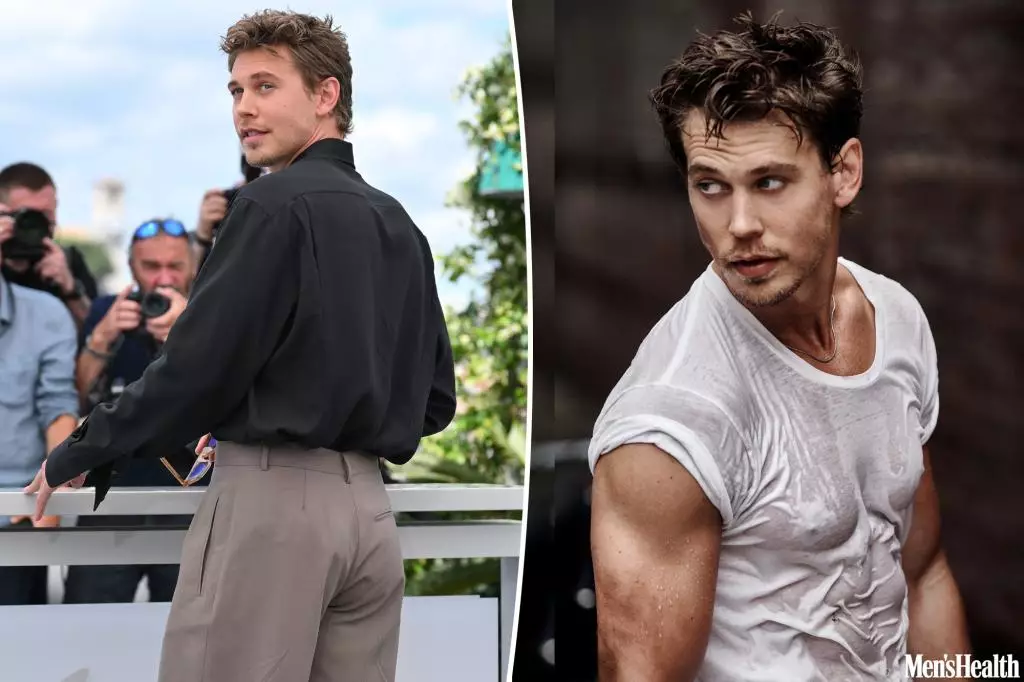Austin Butler’s latest transformation for his role in “Caught Stealing” exemplifies an unwavering dedication to embodying a character through physical authenticity. Unlike typical actors who may settle for minimal effort, Butler immersed himself fully, focusing on creating a believable baseball star-turned-bartender with a noteworthy physique. His collaboration with renowned trainer Beth Lewis highlights a strategic approach rooted in targeted exercises designed to accentuate his character’s traits. Such commitment indicates that Butler perceives physical preparation as an integral part of storytelling, not just a superficial enhancement.
One can’t ignore the unconventional elements of his training—specifically, the emphasis on developing a thicker, more athletic backside characteristic of baseball players. Butler’s inclusion of exercises like hip thrusters, one-arm kettlebell moves, and balancing on BOSU balls underscores a desire not only for appearance but also functional strength and stability. These training choices reflect an understanding that a character’s physicality can profoundly influence audience perception, often more than dialogue or costume. The actor’s openness about his workout regimen demystifies the actor’s craft, making visible the sacrifice and precision involved in transformation.
The Power of Strategic Indulgence
While physical training constitutes the core of Butler’s effort, his approach also involved playful elements—most notably, the decision to eat copious amounts of pizza and consume beer. This intentional indulgence was aimed at achieving a particular body image characterized by a relaxed, less-toned physique—a stark contrast to the traditionally chiseled physique sought in Hollywood. It demonstrates a nuanced understanding of how body language and appearance can signal a character’s backstory and personality traits, such as a hard-living, hard-drinking baseball player.
However, this aspect of his routine raises questions about sustainability and authenticity. Is it truly healthy or sustainable to adopt such a diet for a role? More importantly, what does this say about the superficiality of physical appearance in Hollywood? Butler’s candidness about this strategy challenges the typical notion that fitness must be purely about discipline and restriction. Instead, it suggests that, at times, embracing certain indulgences can be a strategic tool—not only to look a particular way but also to embody a role convincingly.
Challenging Conventional Expectations of Actors
What stands out most about Butler’s journey is his willingness to defy traditional Hollywood standards. His weight gain from 150 to 185 pounds over six months, achieved through rigorous training and controlled dietary strategies, exemplifies a proactive stance toward authenticity. It shows an actor committed to not just glamour but to embodying real, flawed human beings.
This process also underscores the psychological aspects of transformation. Butler admits to using alcohol to help relax into his character, despite not being fond of drinking in real life. Such honesty exposes the actor’s emotional investment, revealing that physical transformation isn’t merely about appearance but involves embracing behavioral shifts—sometimes uncomfortable or unfamiliar—to truthfully portray someone else.
Moreover, Butler’s candid discussion about his evolving style, like the inability to wear certain pants anymore, highlights the tangible effects of his dedication. It communicates that authentic transformation has tangible, visible consequences, which often go unnoticed by audiences. These effects serve as a reminder that actors’ bodies are tools—vehicles that carry the weight of storytelling when used intentionally.
Personal Life and On-Screen Chemistry
Beyond physical and professional transformations, Butler’s recent personal developments also attract attention. The budding chemistry with Zoë Kravitz off-screen hints at the complex interplay between actors’ personal lives and their craft. Their public sightings and subtle chemistry, although under the radar, suggest a genuine connection that could translate onto the screen, enriching their performances.
This dynamic also speaks to the broader Hollywood narrative, where personal relationships often become intertwined with aesthetic and professional pursuits. Butler’s previous relationship with Kaia Gerber and Kravitz’s breakup with Channing Tatum underscore the transient and often intertwined nature of celebrity romances. Yet, their mutual respect and the cautious exploration of their connection reflect a mature approach in a landscape often dominated by tabloids and speculation.
Ultimately, Butler’s holistic approach to his craft—balancing intense physical transformation, strategic indulgences, and personal growth—sets a compelling example of what it means to fully inhabit a role. It reminds us that acting is as much about physical commitment as emotional depth, and that authenticity often stems from a willingness to push beyond comfort zones—even if it involves eating pizza and drinking beer along the way.

